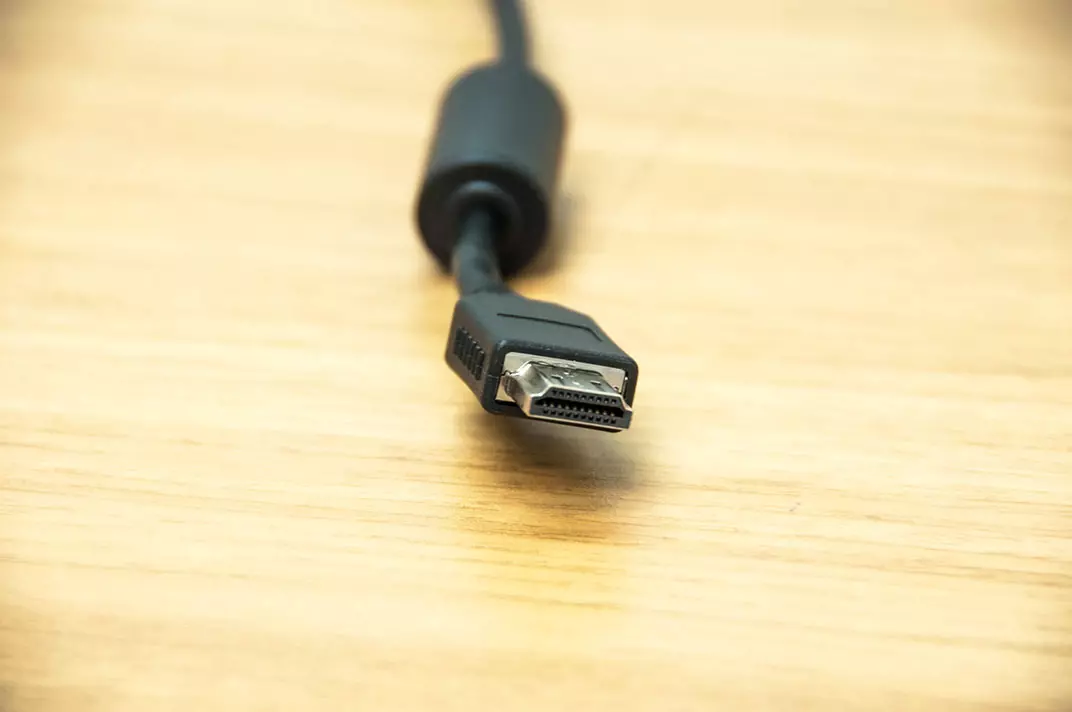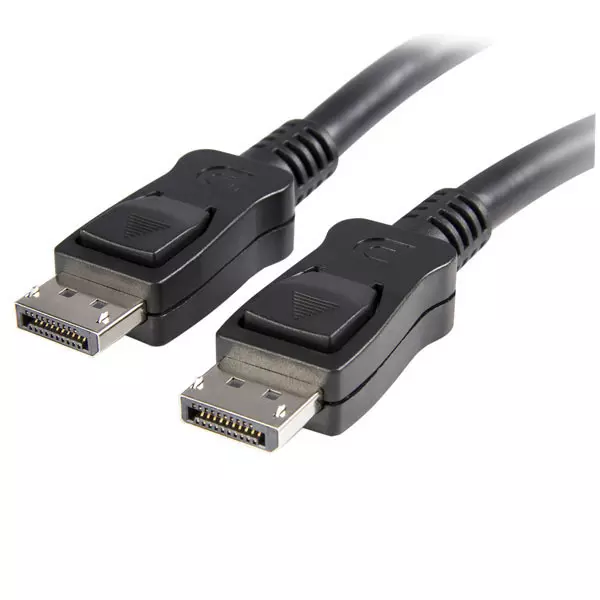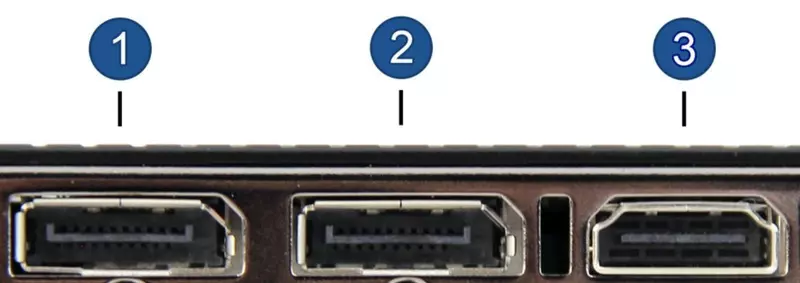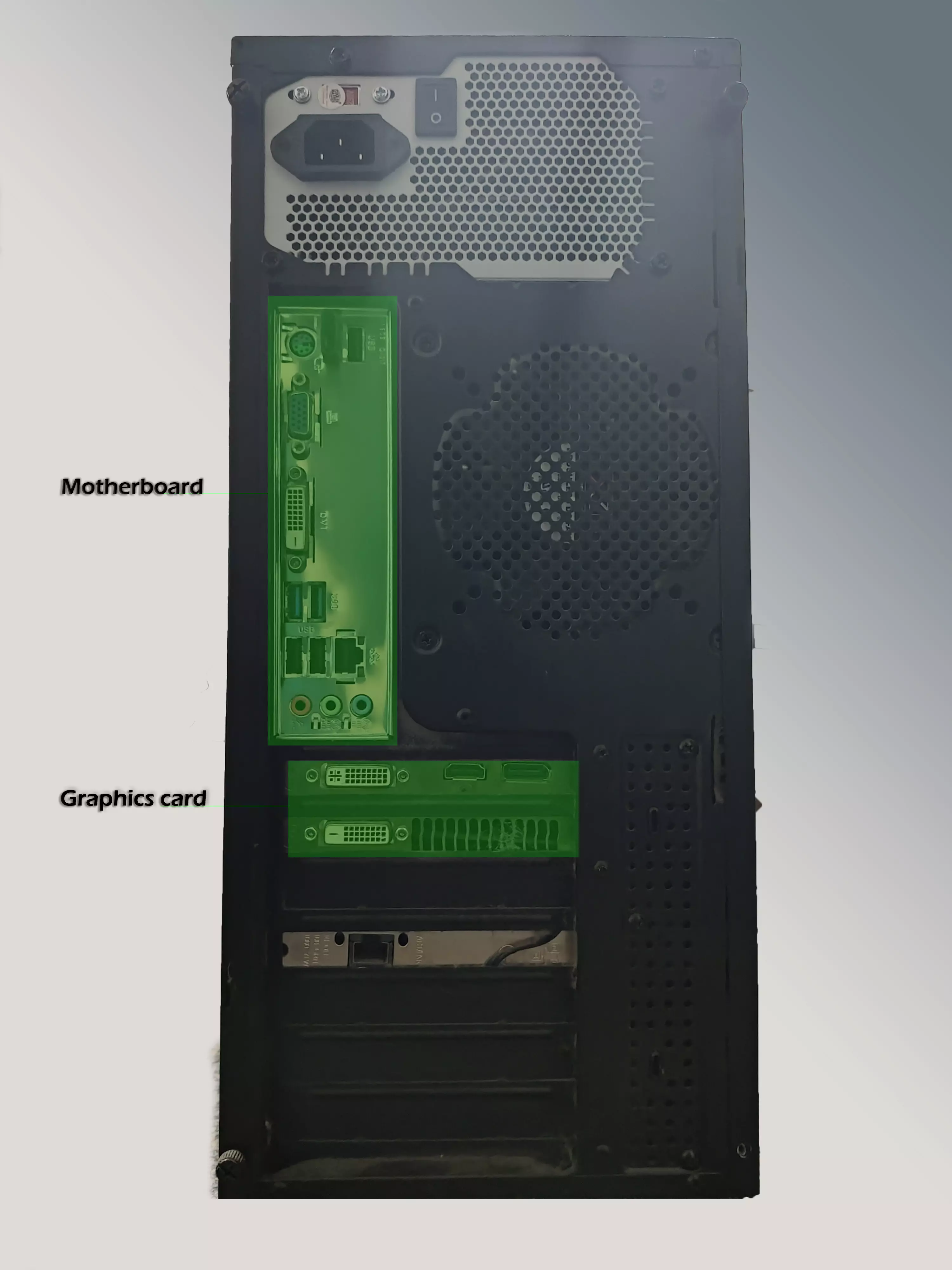⚠️ Due to high seasonal demand, the window to lock in your order for pre-Christmas dispatch is rapidly closing ⚠️
🎄Don't wait until the last minute. Lock it in today🎄
Categories
AudioCPU
General
Graphics Card
Maintenance
Monitor
RAM (Memory)
Sustainability
Use Cases
About Evatech
Since 2013, Evatech Computers, a fully Australian-owned and operated company, has provided custom-built gaming, workstation, and home + office PCs, meticulously tailored to individual client needs and budgets.
Shop
Custom Gaming PCs
Custom Workstations
Pre-built PCs
Monitors
Mice
Keyboards
Headsets & Microphones
Monitor Cabling Options
Published 27th Jan 2022, updated 19th May 2023 - 8 minute readHDMI
DisplayPort (DP)
So, What's the difference?
- HDMI
- DisplayPort
- Connecting to a Monitor
- Which Connections
Single Monitor Problems
- Monitor is blank after starting computer
- The words on the monitor are too small and unreadable
- The picture on the monitor is stretched, too bright/dark, or is not the way you like it
- The display is rotated
- The dreaded 'No Signal'
Multi-Monitor Problems
- Duplicate or Extended
- Additional monitors not detected
There are a small number of mainstream monitor connections but nonetheless it can be overwhelming at times or if you're new to the space. Here we'll break down the common ones currently available and how to identify them. Most systems will use either HDMI or DisplayPort (DP) and we always recommend using direct end to end cabling over the use of adapters or converters of any kind.
HDMI

This is the most common one you'd likely have around the house/office already, it's been used in TVs and monitors for years. There are however some perhaps little-known details about HDMI ports and cables which could be handy to know!
- HDMI 1.4: Supports up to 4K (4,096 by 2,160) at 24Hz, 4K (3,840 by 2,160) at 30Hz, or 1080p at 120Hz.
- HDMI 2.0: Supports up to 4K at 60Hz, and later versions (HDMI 2.0a and 2.0b) included support for HDR
- HDMI 2.1: Supports up to 10K resolution at 120Hz, as well as improved HDR with dynamic metadata and enhanced Audio Return Channel (eARC) which allows sending Dolby Atmos and DTS:X audio from the display to a receiver.
DisplayPort (DP)

DisplayPort can easily be mistaken for yet another HDMI port, but they're certainly not interchangeable. DP has a different connector more common on PCs than TVs. It still allows for high-definition video and, in many cases, audio, but its standards are a bit different. On modern monitors, you'll likely find the following:
- DisplayPort 1.2: Supports up to 4K at 60Hz, some 1.2a ports may also support AMD's FreeSync
- DisplayPort 1.3: Supports up to 4K at 120Hz or 8K at 30Hz
- DisplayPort 1.4: Supports up to 8K at 60Hz and HDR
So, What's the difference?
HDMI, recently revised to version 2.1, is capable of supporting data bit rates up to 48Gbps. VESA even more recently announced DisplayPort 2.0, which can handle raw throughput up to 80Gbps. Both standards support HDR (High Dynamic Range), with its wider brightness and colour gamuts, but HDMI 2.0x only supports static metadata (HDR10), while HDMI 2.1 and DisplayPort 1.4a/2.0 both support dynamic metadata (HDR10+, etc). HDMI and DisplayPort handle 192Hz/24-bit audio.
HDMI
- HDMI connectors have 19 pins and are most commonly seen in three sizes: Type A (standard), Type C (mini), and Type D (micro). Of these, Type A is what you'll find on TVs, Blu-Ray players, soundbars, and PCs so that's where we will focus
- HDMI has two 45-degree angles, one on each side (See Image below on the left side)
- HDMI cables usually have "HDMI" written on them somewhere
DisplayPort
- DisplayPort connectors have 20 pins and are available in two sizes: DisplayPort and Mini DisplayPort. DisplayPort is found on TVs, Blu-ray players, soundbars, and PCs so that's where we will focus
- DisplayPort has a single 45-degree angle on one side (See Image below on the right side)
- DisplayPort often has a locking mechanism to secure the cable into its corresponding port
- DisplayPort cables usually have "DisplayPort" or "DP" written on them somewhere
 <- HDMI
<- HDMI  <- DisplayPort
<- DisplayPort
Connecting to a Monitor
When connecting your system to your monitor you need to make sure your cable matches the corresponding port. In the image below you will see the following ports:
- DisplayPort
- DisplayPort (again)
- HDMI
Note the differences in size/orientation. If you try to force the wrong connection, you're gonna have a bad time.

Which Connections
Many modern motherboards include HDMI and DisplayPort (Motherboard) which is great if you don't use a dedicated Graphics Card (Video Card). Refer to the image below to determine exactly where you will find the connections you need. If you ordered a dedicated GPU and your system includes motherboard connections, just ignore the motherboard outputs! If you did not order a dedicated GPU then you can use the Motherboard connections.

Single Monitor Problems
If you are setting up your system for the first time there are some issues you might encounter. It's always important to verify all components are working before hooking them up. If Evatech provided the PC, you're usually good to go since we perform such extensive testing, benchmarking, stress-testing and quality control before shipping it out.
If there is anything you picked up elsewhere it's good to do a check and make sure it's working on another machine to be sure it's operational.
Monitor is blank after starting computer
- Check that the monitor has power and the lights are on
- Double check cabling to make sure you're using the right input/outputs
- Remove any adapters from the equation if possible
- Remove additional monitors and try just one at a time
- Remove all peripherals and attempt to boot system with just the basics: Keyboard/Mouse, 1 monitor, power
- Unplug the monitor for 20-30sec then plug it back in
The words on the monitor are too small and unreadable
- You will need to adjust the monitor's resolution. Right click the desktop and select Display Settings then scroll down and adjust the screen resolution, select one and see if that improves it
The picture on the monitor is stretched, too bright/dark, or is not the way you like it
- You will need to check the monitor settings. Look for a button on the bottom of the monitor which will open a menu to change monitor settings
- Find the default settings and return the monitor to default settings
- Use the vertical and horizontal settings to centre the image and stretch to your liking
- Set the brightness and contrast to your liking
- Set the hue and locate the point where the colours on the screen look accurate or life-like
If the settings do not improve the image display, the monitor may be going bad
The display is rotated
- Right click the desktop and select Display Settings then scroll down and adjust the 'Display Orientation' section to match the monitors current orientation
The dreaded 'No Signal'
- Check the cables are plugged in correctly: It might sound obvious, but a loose cable can cause no signal errors more often than any other problem. If they do seem well secured, unplug and plug them in again just to be sure
- Make sure you’ve selected the right input: Monitors with multiple input options need you to select which cable you’re using. Use the buttons on your monitor to make sure that you’ve selected the same one as the cable you’re connecting to it (HDMI, DisplayPort, DVI)
- Change data cable: If you’re using an older cable standard like VGA or DVI-D, you might want to try a newer alternative like HDMI or DisplayPort. You can also just try using another cable of whatever standard you’re using in case there was a problem with that particular cable
Change graphics port: If you’re using a dedicated graphics card with multiple output ports, try swapping which one you use. Sometimes ports themselves can be damaged and switching to another is all you need to do to correct it.
Multi-Monitor Problems
Duplicate or Extended
There are a few different ways to display content on two screens, but "Duplicate" is sometimes the default. If yours is just showing a copy of what’s on your main screen and you’d rather it acted more like an extension of it, here’s how to change it.
- Press Windows key + P to bring up the Project menu
- Select Extend either by clicking it with your mouse, going up or down with the arrow keys and pressing Enter on the right one, or pressing Windows key + P to cycle through options

Alternatively, you can right-click the desktop and select Display Settings, and use the drop-down menu at the bottom of the window to choose your preference under the "Multiple Displays" heading. That way you can also adjust which monitor appears on the left and which is on the right by dragging and dropping the numbered displays at the top of the window
Additional monitors not detected
- Use Windows' detect tool: It may be that Windows hasn’t recognized that a second display is connected. To force it to check, right-click the desktop and select "Display Settings" from the menu that appears. In the Display Settings window, click the "Detect" button
- Turn the screen off and on again: Some connection types don’t like hot swapping while a monitor is powered on. Turn the display off and then on again. That may be all it needs to recognize the video feed and start displaying it correctly
- Update your drivers: Although Windows 10 supports multiple monitors by default, your set up may not for some reason or another. Making sure you're running the latest graphics drivers for your system can sometimes fix problems with no signal errors
Something still not right with your Evatech PC? We're standing by and our support team can assist you!
Contact Evatech SupportIf this page didn't solve your problem, there's many more to view, and they're all very informative.
Evatech Help Docs









 5/2 Fiveways Boulevarde, 3173 VIC
5/2 Fiveways Boulevarde, 3173 VIC Monday - Friday 10am-6pm
Monday - Friday 10am-6pm +61 (03) 9020 7017
+61 (03) 9020 7017 ABN 83162049596
ABN 83162049596 Evatech Pty Ltd
Evatech Pty Ltd